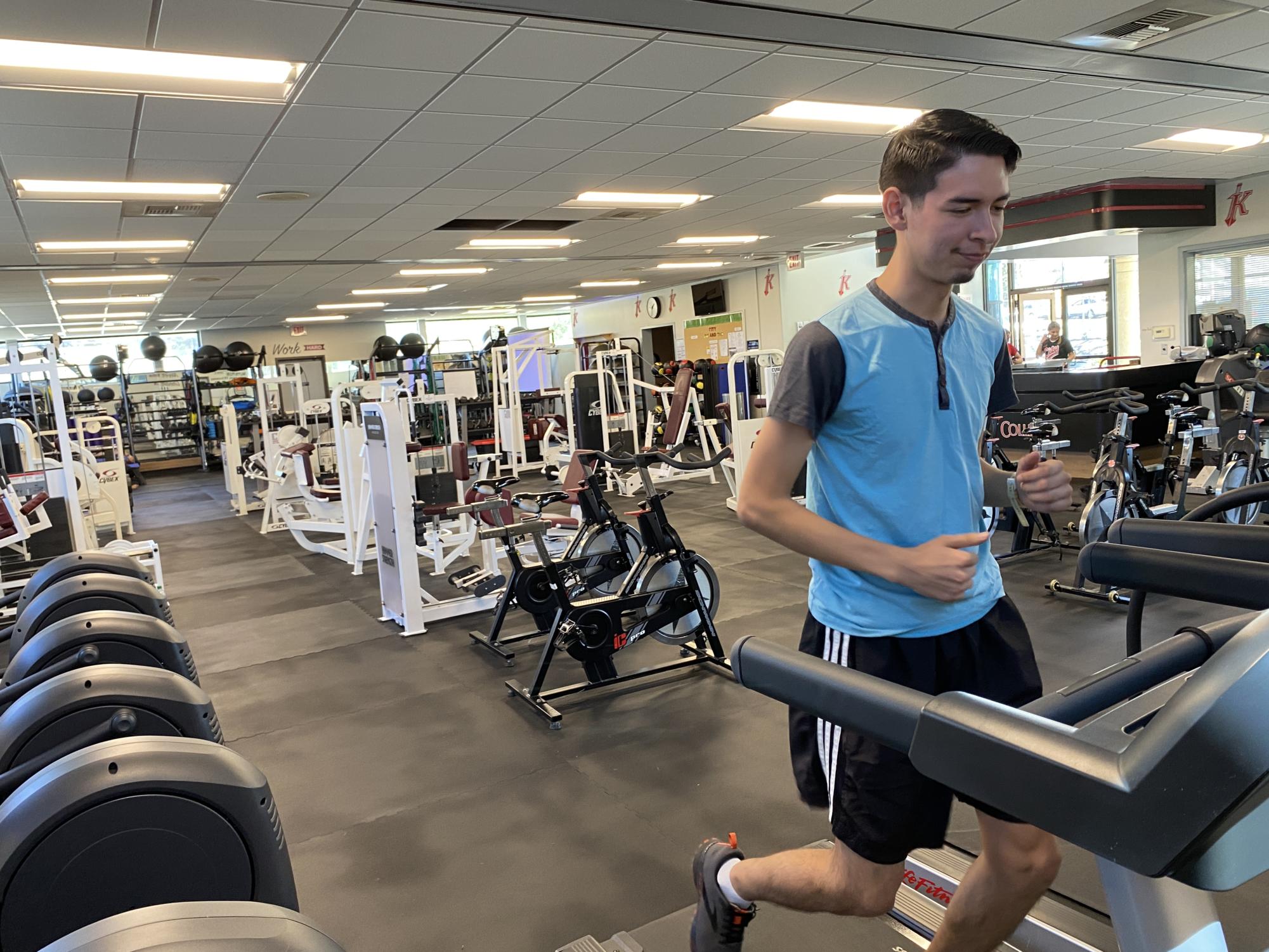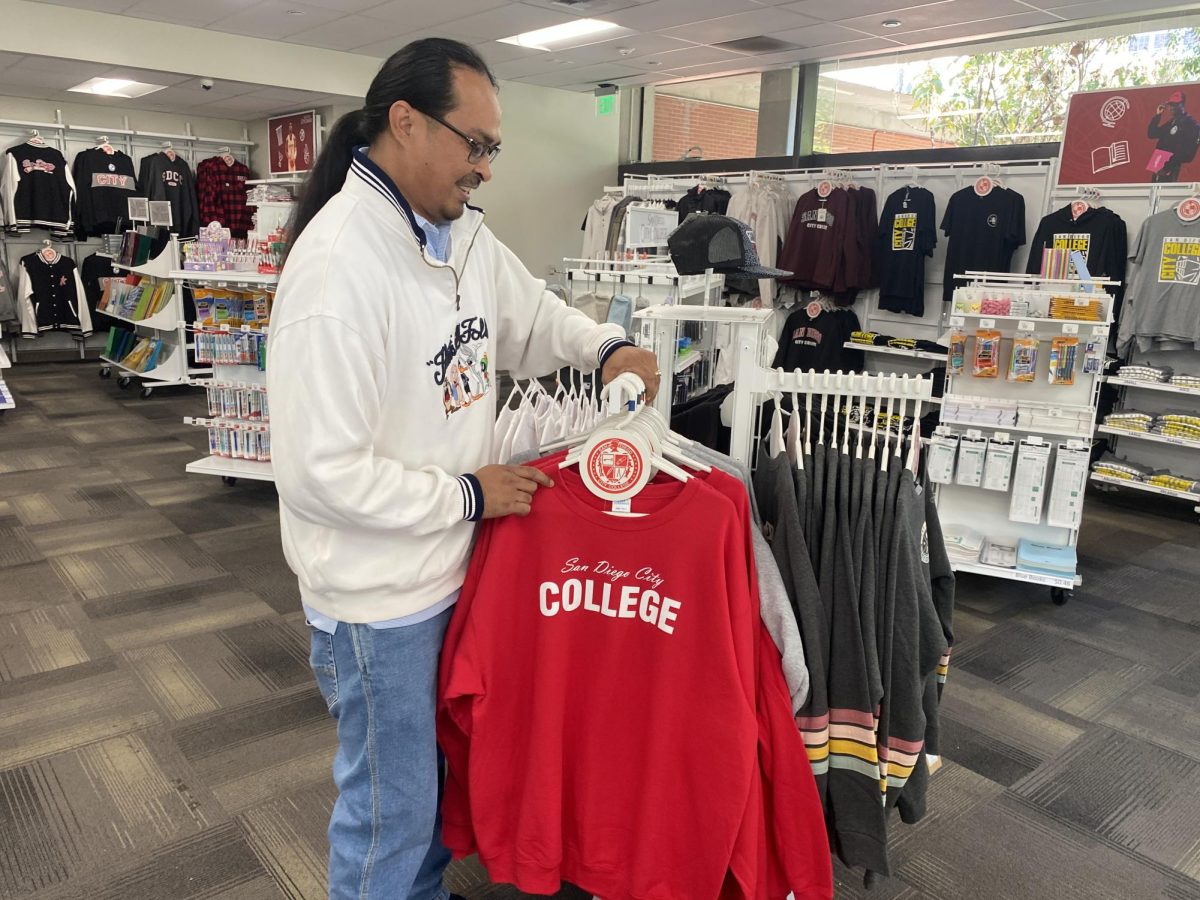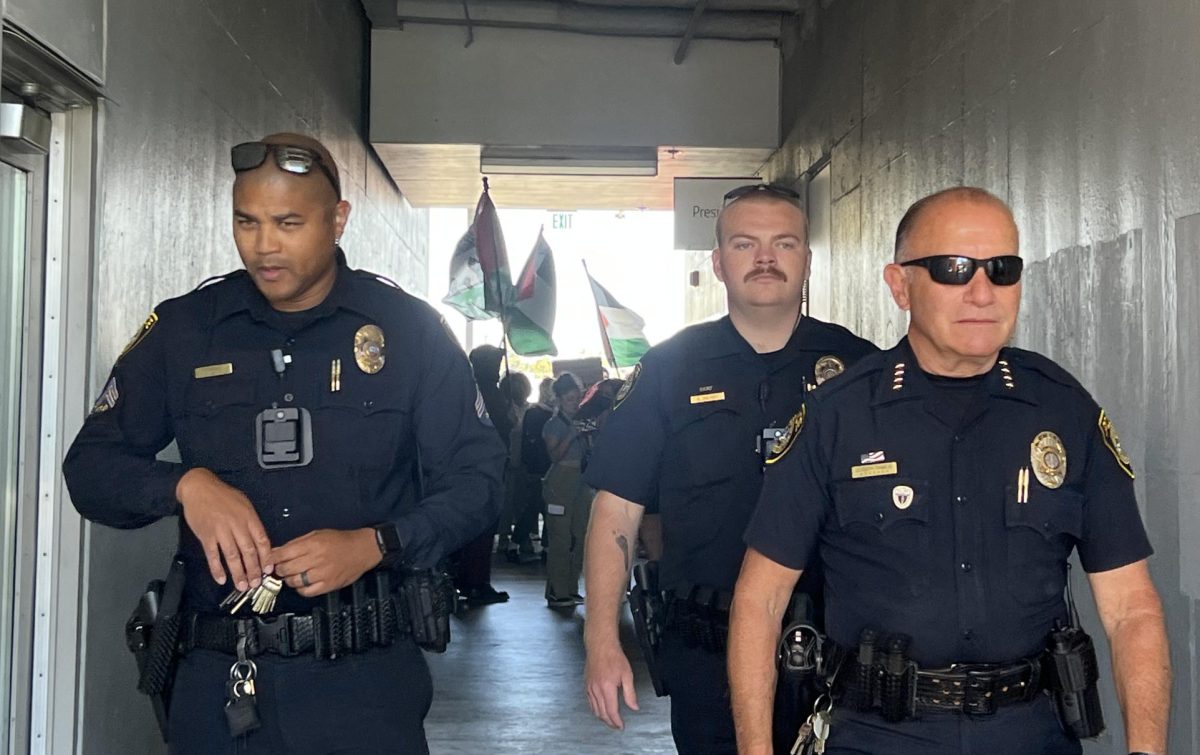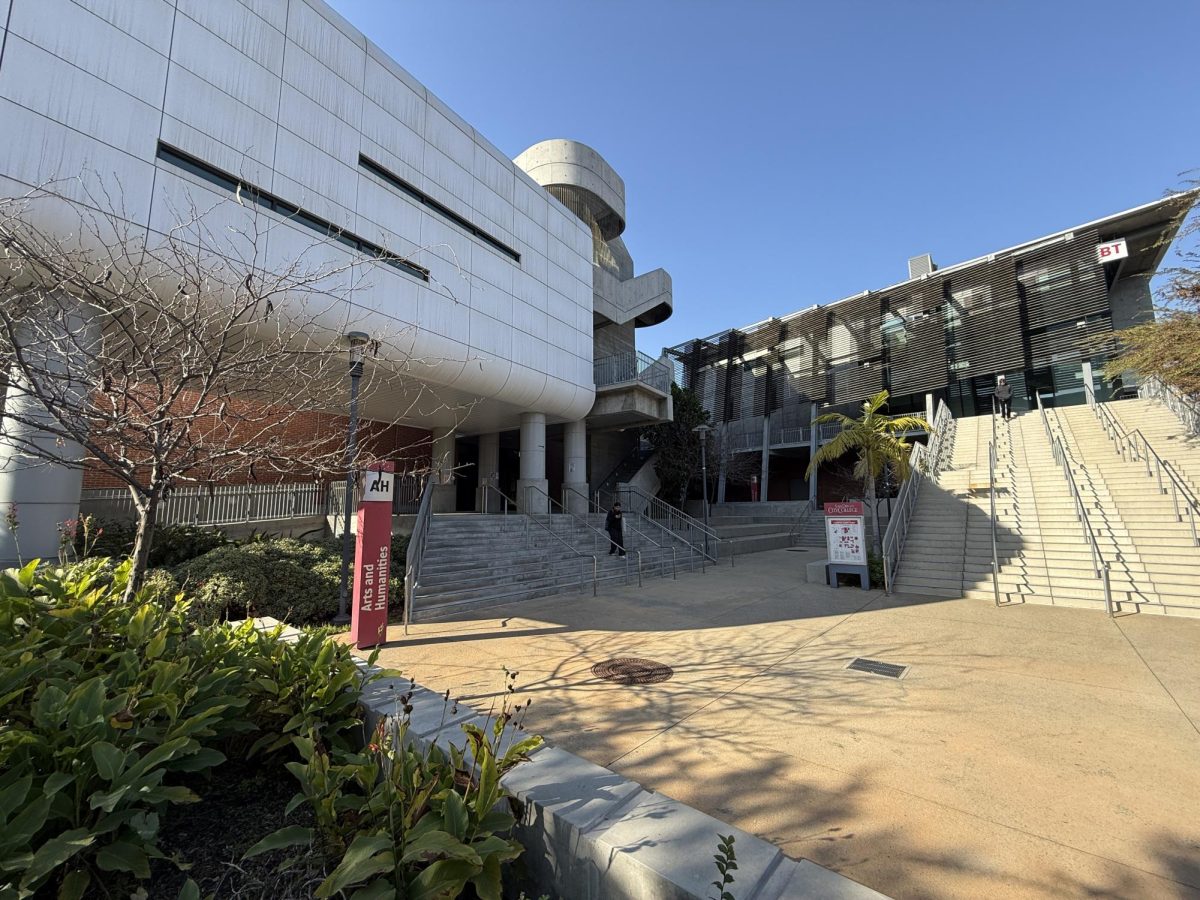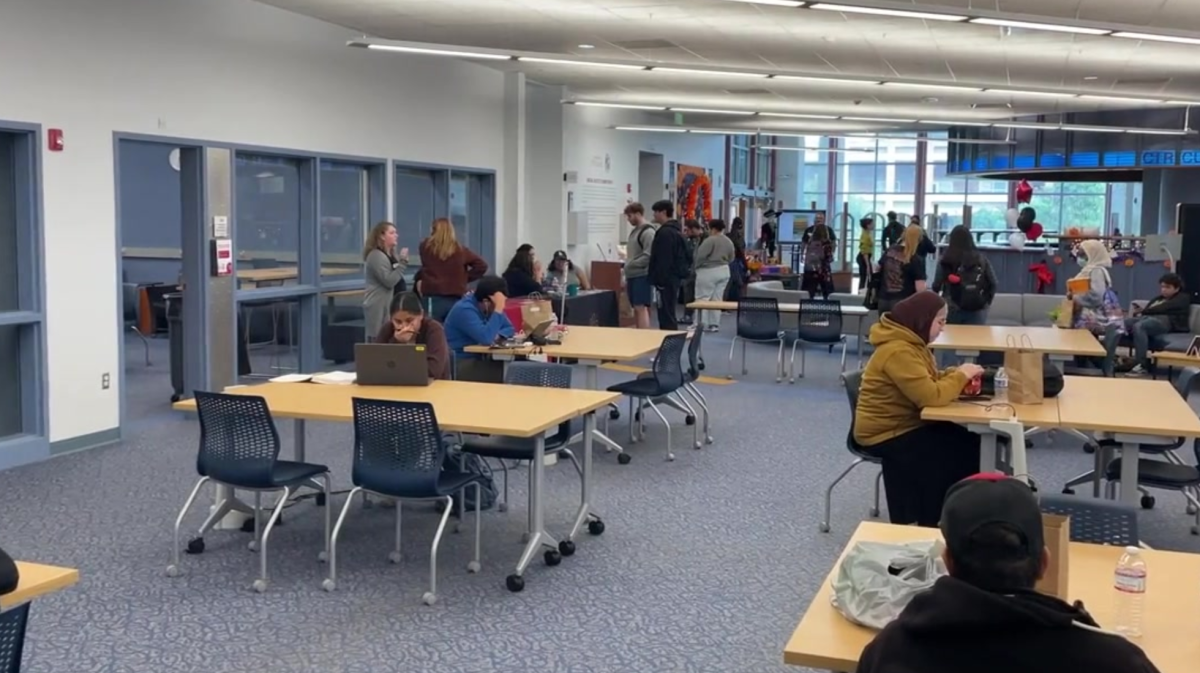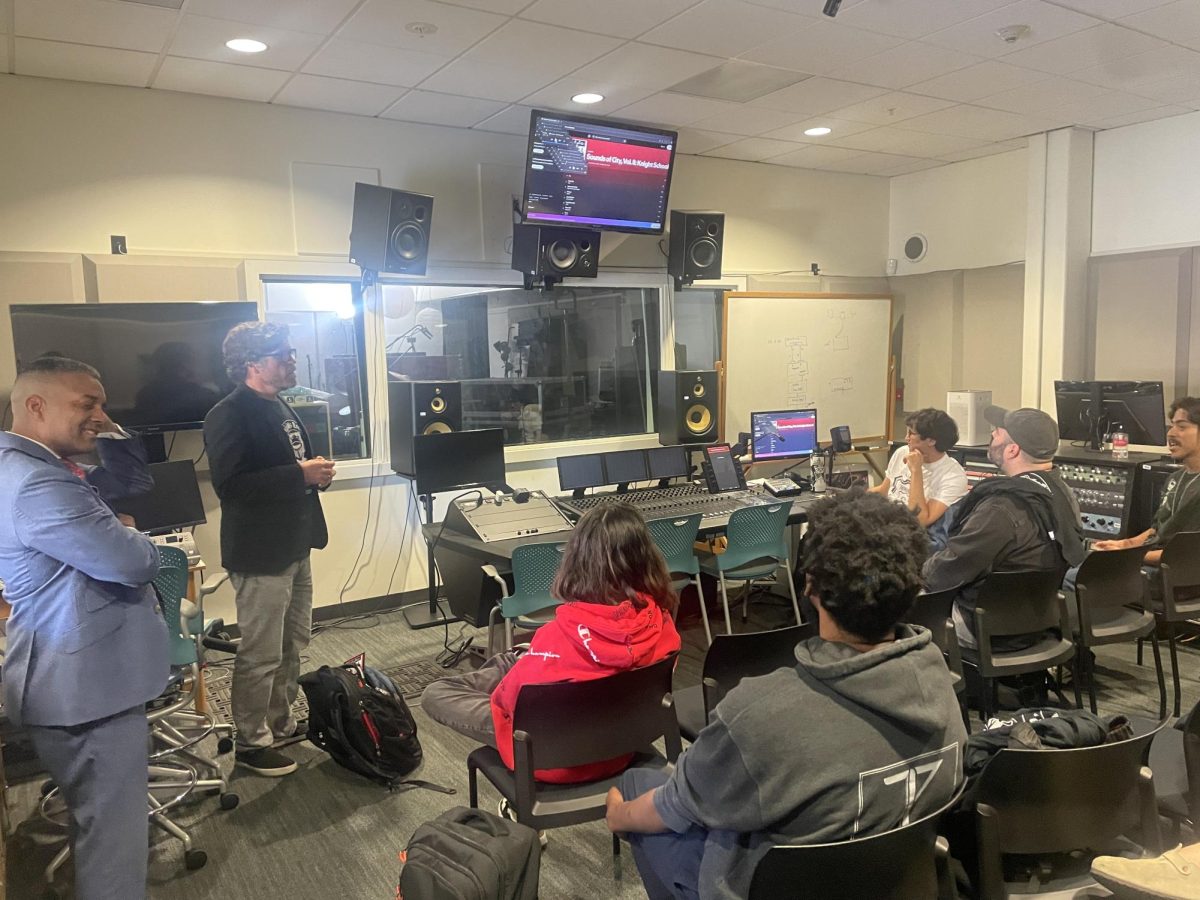On the north side of the San Diego City College campus sits the 3,000-square-foot Fitness Center, fully equipped with weights and cardio machines.
Most students will likely never step foot in it.
Professor Paul Greer has his office in the Fitness Center and said the gym space is usually empty.
“This is kind of a ghost town,” Greer said in an interview with City Times on Sept. 6. “What you’re seeing here is the majority of our day.”
So why aren’t City students working out in their school’s gym? The simple answer is they’re not allowed to.
To be able to use the Fitness Center, students must enroll in a specific exercise science class and come at a designated time.
Can’t see the video? Click here. To read the transcript, click here.
Currently, the Fitness Center is occupied for only a few hours a week by one core and cardio fitness class and one adapted PE class. Athletics teams use the facilities around midday.
Otherwise, the Fitness Center is closed.
But it wasn’t always that way.
When the Fitness Center opened in 1992, it was designed as a lab, meaning students could come in and use the equipment anytime.
Students still needed to be enrolled in a class, but the facilities were accessible from 6:30 a.m.-1 p.m. and then again from 4-8 p.m.
Greer, who has been the Fitness Center coordinator since its opening, said the lifelong fitness lab class was heavily attended.
“Back then, it was an incredibly popular class,” Greer said. “We had upwards of about 1,400, 700-1,400 students enrolled in this class.”
The course operated with a positive attendance system, meaning students would get class credit by clocking in a certain amount of hours at the gym. Students could come in and leave anytime, much like a regular gym.
However, the number of hours a student clocked also correlated to the amount of funding the college would receive. So when students didn’t clock enough hours at the gym to pass the class, the school would also lose money.
“We were only getting paid for students that showed up,” Greer said. “Now, historically, how often do people join gyms, and then stop coming?”
The positive attendance system meant City College stood to lose a lot of funding to flakey students.
Now, the lifelong fitness lab class, renamed core and cardio fitness, is census-based like most other classes. Census-based means students have to come at scheduled class times and the school receives funding for every student enrolled, whether or not they are showing up after the first two weeks.
This semester, the core and cardio fitness class has only 29 students.
Greer said part of the reason for this drop in enrollment has to do with exercise trends. When the Fitness Center was opened, circuit training was incredibly popular, and the facility was designed to support that.
Students’ fitness interests have changed with time, Greer said, so enrollment in different exercise science classes fluctuates.
“They’re coming more for pilates or more for yoga, they’re coming more for whatever the trend is,” Greer said. “I can’t predict what the next trend will be.”
The ACSM’s Health & Fitness Journal says gym-goers are shifting back to weight training.
According to the journal’s yearly survey of fitness trends, “the health and fitness industry is returning to the basics, with strength training with free weights the #2 trend, body weight training as the #3 trend, and functional fitness training as the #5 trend for 2023.”
The equipment in the Fitness Center is designed for free weight and bodyweight training, but the current student enrollment just wouldn’t be enough to keep the space open for more than a few hours a week.
“For us to be open for the number of hours … where people can come in, it might be like 500 or 600 students, and we don’t have those numbers currently,” said Aaron Detty, dean of Health, Exercise Science and Athletics. “We’d be under-enrolled by something like 70 or 80%.”
Detty said beyond low enrollment, there are multiple other factors preventing open gym access.
“So there’s liability,” Detty said. “Part of it’s curriculum, part of it’s insurance, part of it’s just safety.”
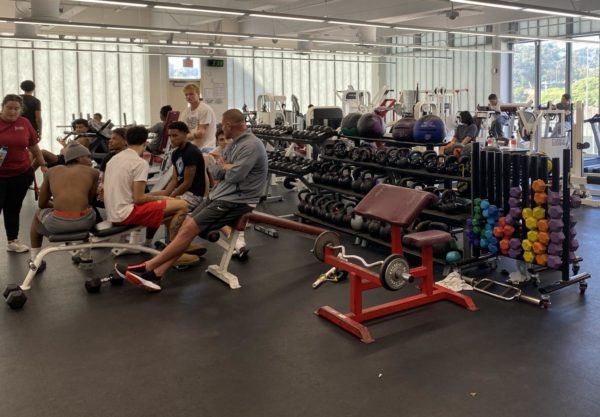
Basketball coach Mitch Charlens teaches a weight training class in a separate room of the P building. He said that he’s often approached by students who are interested in using the Fitness Center and weight room facilities.
“People come all the time and say, ‘I’m a student, when can we use the gym?’ and I have to tell them, ‘You have to sign up for a class,’” Charlens said. “I’m sure students would love to have use of the facilities.”
Alexander Robles, a student enrolled in the weight training class, said he would utilize an open gym space if it was available.
“It’s that flexibility that I would really appreciate,” Robles said.
Currently, signing up for a class is the only option for City students wanting to use gym facilities on campus, and luckily there are many exercise science courses to choose from.
The exercise science department encompasses dozens of sports and activities, including weight training, cardio, yoga, and others, with the added benefit of professional instruction. These courses are an affordable and educational alternative to a private gym subscription.
“The class just motivates me more to actually show up,” said Alyssa Sheldon, another student enrolled in the weight training class.
Greer believes that with public health on the decline, City College is the perfect place to get into fitness and try a new activity.
“(Community college) is a beautiful niche to get people active,” Greer said, “because they can afford it.”
Updated, Oct. 19: CTTV video added to this story.


